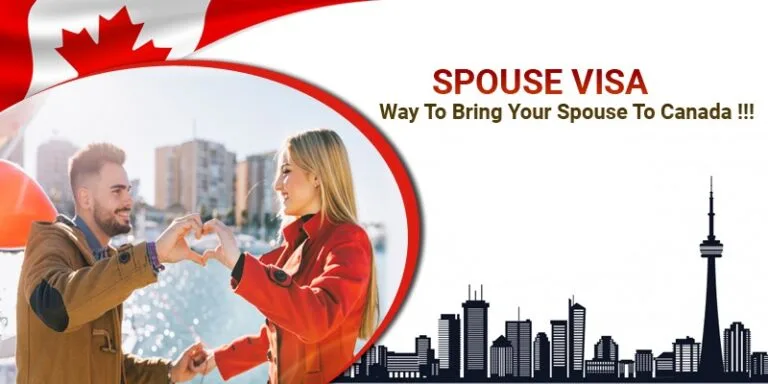
Canada has long been a top choice for immigrants, offering an excellent quality of life, rich diversity, and a thriving economy. Among its visa options, the Spouse Visa (or Spousal Sponsorship) specifically supports Canadian citizens and permanent residents in reuniting with their spouses or common-law partners, enabling them to live together in Canada as permanent residents.
Once approved, the Spouse Visa grants the partner rights to live, work, and study in Canada, supporting family unity and integration.
If you’re interested in moving to Canada with a spouse visa, this guide will cover the process, eligibility, application steps, and what to expect once you arrive.
What is the Spouse Visa?
The Spouse Visa, part of Canada’s Family Class Immigration program, permits Canadian citizens and permanent residents to sponsor their spouse, common-law partner, or conjugal partner for permanent residency. The main purpose is to reunite families, and while the application may require time for processing, it’s one of the more straightforward routes to Canadian residency.
Spousal Sponsorship Eligibility
To qualify for a spouse visa, both the sponsor (Canadian citizen or permanent resident) and the applicant (foreign spouse) must meet certain criteria.
For the Sponsor:
- Age: Must be at least 18 years old.
- Status: Must be a Canadian citizen or permanent resident. Citizens living abroad must demonstrate plans to live in Canada once the visa is approved.
- Financial Capacity: Must commit to financially support the spouse for three years after their arrival in Canada. No income threshold is set, but sponsors cannot receive social assistance, barring disability-related reasons.
- Prior Sponsorships: If the sponsor has previously sponsored a spouse or defaulted on a sponsorship, they may not be eligible.
For the Sponsored Person (Spouse):
- Age: Must be at least 18 years old.
- Genuine Relationship: The relationship must be genuine, assessed to confirm it is not solely for immigration purposes.
- Health and Security: Must pass medical, criminal, and security checks; applicants with serious medical or criminal concerns may be inadmissible.
Types of Recognized Relationships:
- Spouse: Legally married under both the country of marriage and Canadian law.
- Common-law Partner: In a conjugal relationship with the sponsor for at least 12 consecutive months.
- Conjugal Partner: In a conjugal relationship for at least one year but unable to live together due to legal or immigration barriers.
Canada provides a structured Spouse Visa pathway for Canadian citizens and permanent residents to sponsor their spouses or common-law partners for permanent residency. Here’s an overview of the types of spousal sponsorship, application steps, and what to expect upon arrival in Canada.
Types of Spousal Sponsorship
Outland Sponsorship:
Designed for applicants residing outside Canada during the application process, outland sponsorship allows the spouse to travel to and from Canada if they comply with their country’s visa requirements. Processing generally takes between 12 to 18 months.
Inland Sponsorship:
For couples where the foreign spouse already resides in Canada on a temporary visa (visitor, student, or work visa), inland sponsorship allows them to apply for permanent residency from within Canada. During processing, the applicant may qualify for an open work permit, enabling them to work while waiting.
Steps to Apply for a Spouse Visa
- Prepare Your Application Package
- Download and complete the spousal sponsorship forms from the Immigration, Refugees, and Citizenship Canada (IRCC) website.
- Gather evidence proving a genuine relationship, like marriage certificates, photos, communication records, and joint financial documents.
- Include identity documents, police certificates, and a medical exam report.
- Submit the Application
- Mail the completed application package to the designated IRCC office.
- Pay the application fee (around CAD 1,050), covering processing and permanent residency fees. Additional costs may apply for medical and police checks.
- Application Processing
- IRCC reviews applications, possibly requesting additional documents or an interview to verify relationship authenticity.
- Processing takes roughly 12 to 18 months for outland sponsorship, with inland sponsorship sometimes requiring a longer timeframe, although it allows the spouse to remain in Canada.
- Decision and Visa Issuance
- If approved, the foreign spouse receives permanent residency and a Confirmation of Permanent Residence (COPR) document, required for entry into Canada.
After Arriving in Canada
Upon receiving permanent residency, spouses gain rights similar to those of Canadian citizens:
- Right to Work: Free to work for any employer in Canada.
- Right to Study: Eligible for education at Canadian institutions and may qualify for domestic tuition rates.
- Access to Social Benefits: Health care and other benefits through provincial health plans.
- Pathway to Citizenship: After three years as a resident, they can apply for Canadian citizenship if they meet the requirements.
Common Challenges and Tips
- Proving Relationship Authenticity:
Include diverse evidence—photos, chat logs, letters, and endorsements from family and friends. - Long Processing Times:
Ensure all required documents are complete and error-free to avoid delays, and check your application status online. - Financial Sponsorship Concerns:
Providing proof of financial stability or a job offer can ease any concerns about the sponsor’s ability to support the spouse.
Conclusion
Navigating Canada’s spouse visa process is a rewarding way for couples to start a new life together in Canada. With patience, thorough documentation, and a clear understanding of the steps, you can approach this journey confidently, knowing that a fresh start in Canada awaits.